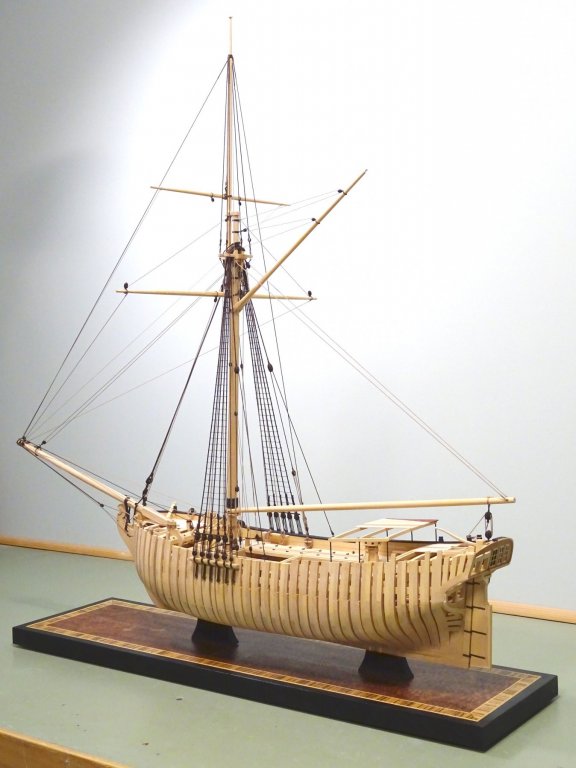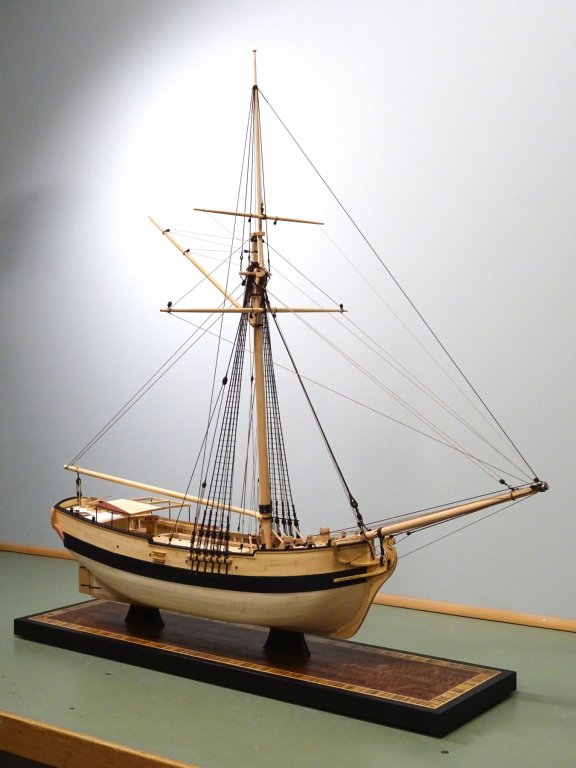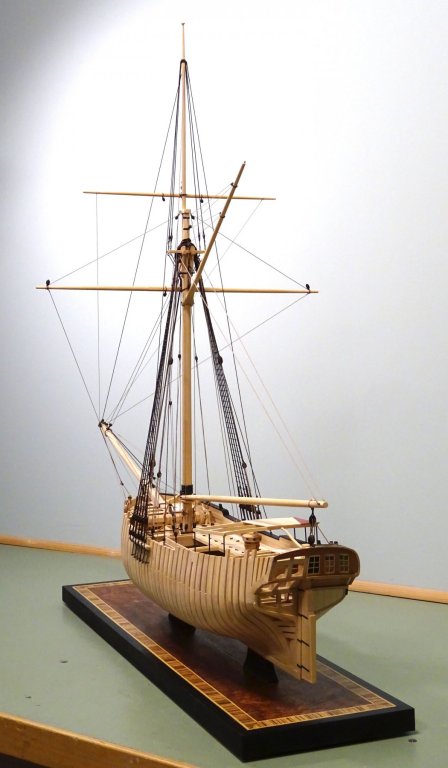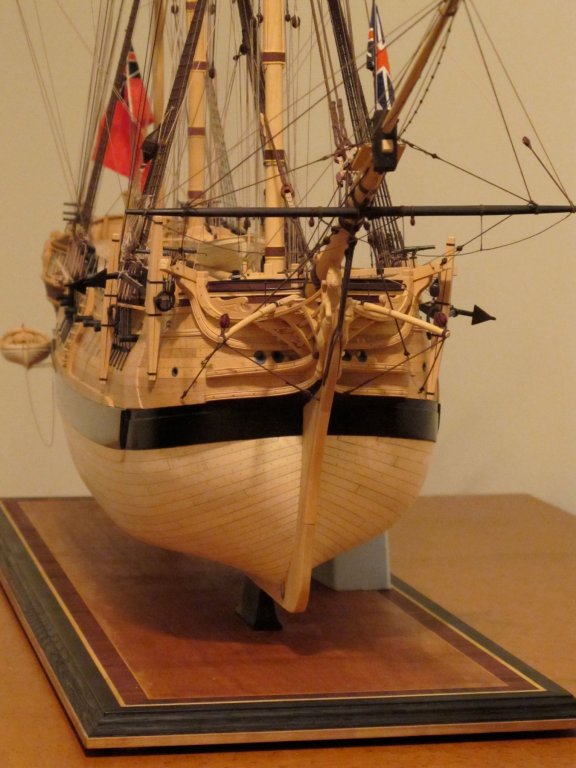-
Posts
13,292 -
Joined
-
Last visited
Content Type
Profiles
Forums
Gallery
Events
Everything posted by druxey
-
Good to see you back. That first photo make you look as if you live in - oh, yes, you do live Down Under! Those figures look great now they are painted.
-
Well, one opinion, for what it's worth: ratlines are part of the standing rigging, therefore are tarred. It's possible that sailors' hands and feet acquired some of this stuff when climbing the rigging, so were referred to as - wait for it! - 'tars'.
-

Using Holly for decks
druxey replied to Jim Rogers's topic in Building, Framing, Planking and plating a ships hull and deck
You raise an interesting question, Jim. Holly decks are a model-makers' convention. Another convention that does not reflect 'real' ships is ebony for false keels. Yet another is using black line for standing rigging. These styles were begun by well-known model-makers and then copied by many others. And so it continues. Personal taste comes in to play here. Some prefer a stylized look to their models. Others prefer a 'realistic' appearance to their models, including wear and weathering. You, as the maker, have to please yourself (unless you are building on commission for a client). There are no absolute right or wrongs. -
Model by David Antscherl for sale The Hayling hoy of 1760 is a carefully researched model of an original subject at the classic scale of 1:48. This model was constructed as a prototype for a forthcoming book. Made of Castello boxwood, pear and holly, it is fully framed with one side fully planked. The model is rigged and measures 28”L x 28”H x 14W”. Offered on a custom veneered base but uncased. Serious enquiries are invited. More photographs upon request, terms available.
-
Looking good, that is to say, awful! Thanks for the early 'heads up', T&E. Of course, watching the trailer in the dead of Canadian winter is not uplifting!
- 346 replies
-
- terror
- polar exploration
-
(and 2 more)
Tagged with:
-
Sorry if I misinterpreted your photo, Maurys. I'll shut up now and slink away!
- 525 replies
-
- anchor hoy
- hoy
-
(and 1 more)
Tagged with:
-
Sorry to read about your re-do, Gary. Usually the channels rest against the outer planking, and are not inserted into a slot in them.
-
Small point (which may be unimportant to you!): If you serve in the opposite direction to the 'lay' of the rope, the result will be smoother in appearance. The example above seems to be served in the same direction. That's a serious looking machine you have there for the job, Maury!
- 525 replies
-
- anchor hoy
- hoy
-
(and 1 more)
Tagged with:
-
I found it much easier to work on the counters with the model inverted. Nice work on the lower counter figures!
- 1,449 replies
-
SilkSpan worked well for me. You might want to get the supplement to Volume IV, The Fully Framed Model from SeaWatchBooks. It describes a method of working with this material.
-
No, that is a pirated version - and not a very good one - lifted from the book that you see advertised, I'm afraid.
-
This continues to be a beautiful piece of craftsmanship, Amalio!
-
I still enjoy my DB200 Unimat, circa 1970. It is a very versatile power tool. Thoroughly recommended, and other accessories are available on eBay.
- 4 replies
-
- flex drive
- table saw
-
(and 2 more)
Tagged with:
About us
Modelshipworld - Advancing Ship Modeling through Research
SSL Secured
Your security is important for us so this Website is SSL-Secured
NRG Mailing Address
Nautical Research Guild
237 South Lincoln Street
Westmont IL, 60559-1917
Model Ship World ® and the MSW logo are Registered Trademarks, and belong to the Nautical Research Guild (United States Patent and Trademark Office: No. 6,929,264 & No. 6,929,274, registered Dec. 20, 2022)
Helpful Links
About the NRG
If you enjoy building ship models that are historically accurate as well as beautiful, then The Nautical Research Guild (NRG) is just right for you.
The Guild is a non-profit educational organization whose mission is to “Advance Ship Modeling Through Research”. We provide support to our members in their efforts to raise the quality of their model ships.
The Nautical Research Guild has published our world-renowned quarterly magazine, The Nautical Research Journal, since 1955. The pages of the Journal are full of articles by accomplished ship modelers who show you how they create those exquisite details on their models, and by maritime historians who show you the correct details to build. The Journal is available in both print and digital editions. Go to the NRG web site (www.thenrg.org) to download a complimentary digital copy of the Journal. The NRG also publishes plan sets, books and compilations of back issues of the Journal and the former Ships in Scale and Model Ship Builder magazines.






